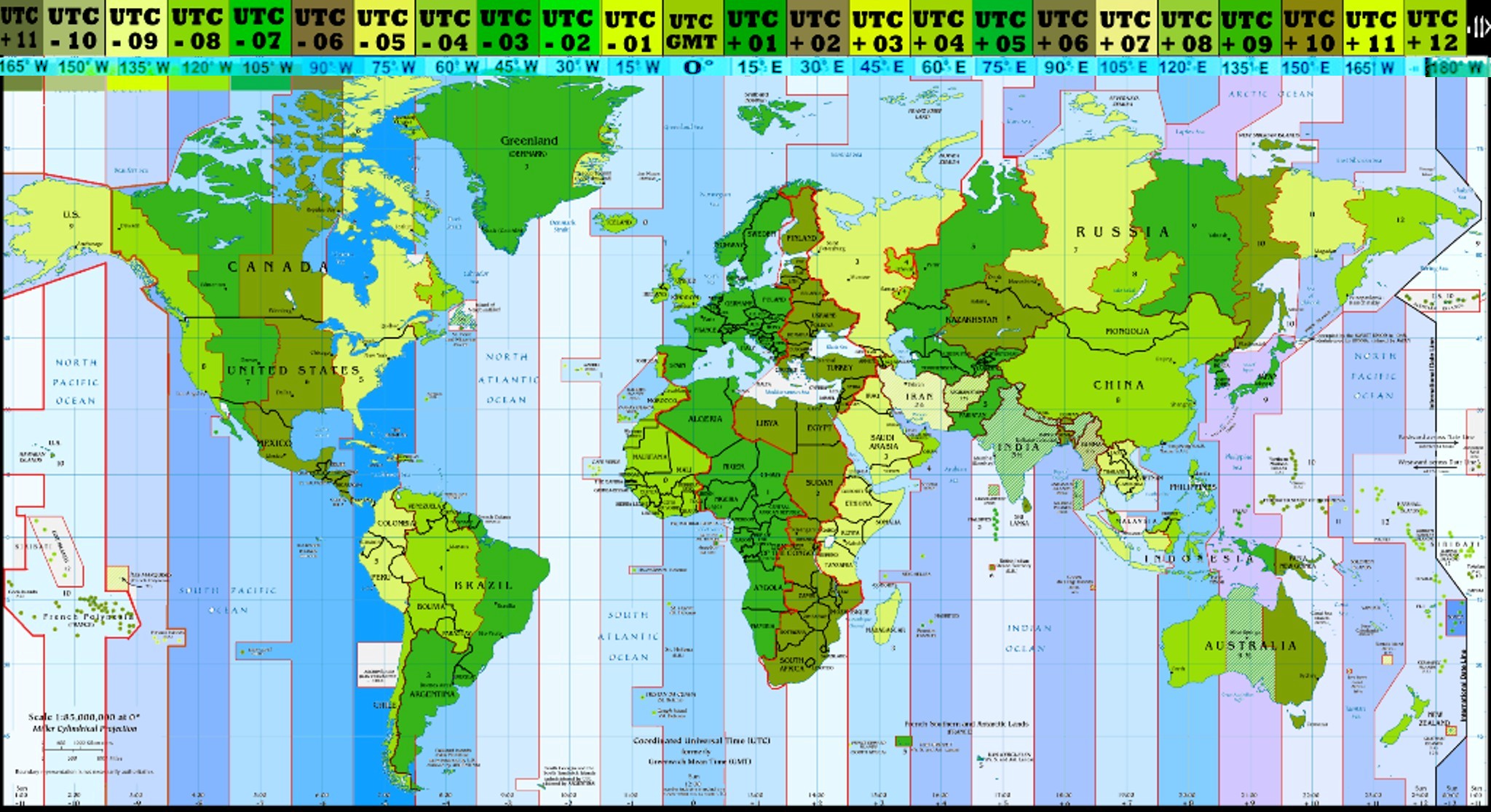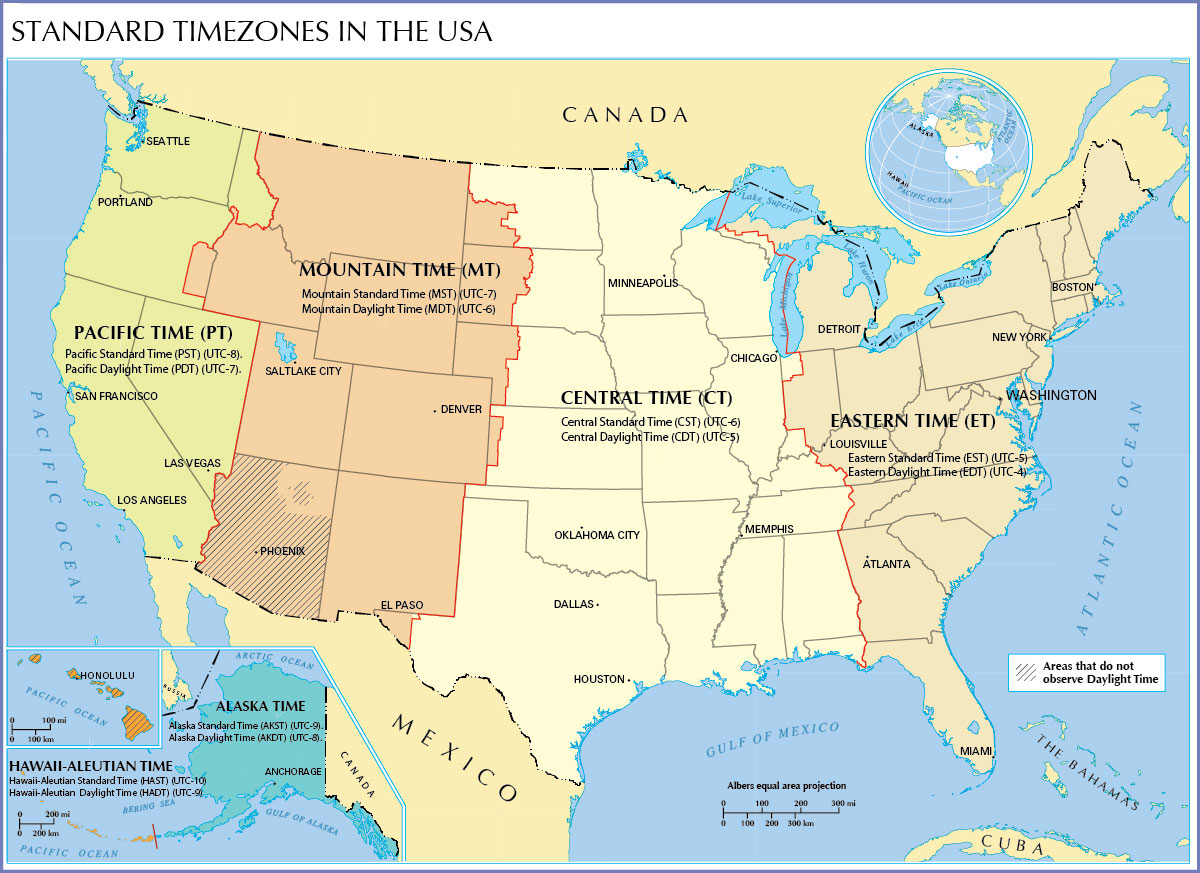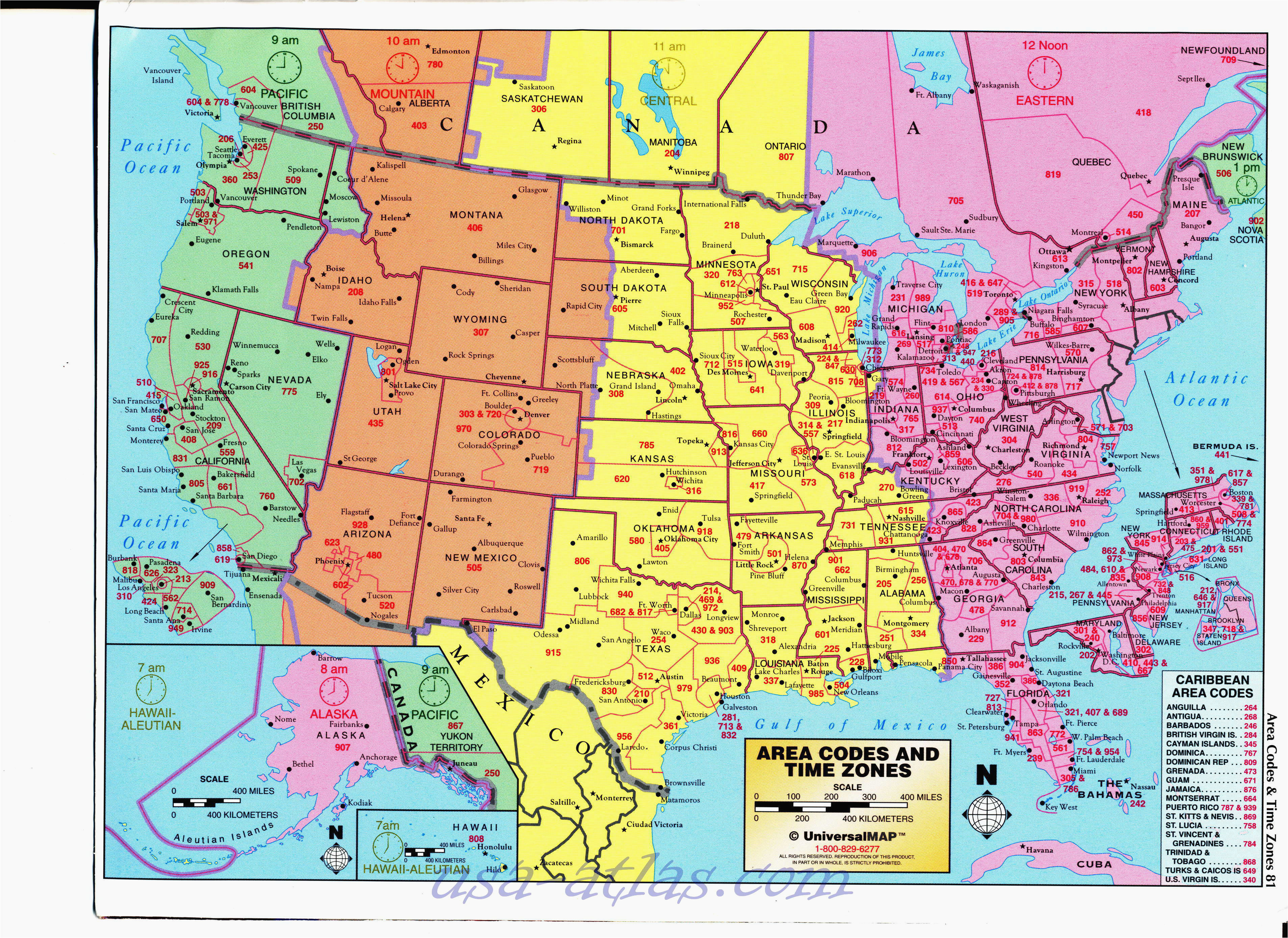

CST - Central standard time equal to UTC - 6, are the areas in the middle of the United States, on this zone are also Canada, Mexico, Guatemala, Honduras, etc.

MST - Mountain standard time equal to UTC - 7, is the time of the mountainous areas in the west of the United States.PST - il Pacific Standard Time equal to UTC - 8, this is the time that we find in the Pacific coast of the United States, but also in some areas of Canada and Mexico.The most important symbols to be known are those used in the United States, let's have a look to them starting from the west to the east and also considering the time difference with UTC (similar to the difference with United Kingdom): Traveling is important to know the acronyms related to time zones, nothing complicated, they are an alternative way to express the time in relation to UTC, the time reference standard previously seen. The acronyms UTC, PST, MST, CST, EST, CET When traveling to another country you also have to pay attention must be taken over to the time zone of arriving to the presence of daylight saving time (both the country of departure to arrival). Even more extreme is the choice of China that uses a single time zone. It must be said that the allocation of time zone also follows political/economic choices and therefore there are cases in which the time zone of a country does not follow perfectly the clove physical defined by meridians, one example are Spain and France that have the same time zone of Italy although not belong to the same longitudinal band, the reason is to facilitate trade relations between countries. Thanks to the time zone time varies from one country to another in multiple of time moving from one meridian to another, if we go from East to West we will turn back the clock as many hours as the number of time zones, vice versa traveling from west to east. Over time it has been replaced by UTC (Coordinated Universal Time), which coincides with the GMT but it was decided to remove the name of a place from a value international standard. So we have a total of 24 time zones and always by convention are indicated in relative terms with reference to the prime meridian of longitude 0 passing through the Greenwich Observatory, London in England, who is called GMT (Greenwich Mean Time). The time zone is no more than the clove, or rather the time only applied to the wedge, in the defining of time is used that has the meridian passing through the center of the segment of 15 degrees. The time zone definition start from the assumption that the earth has a spherical shape and that a complete rotation of 360 degrees on its own axis takes place in 24 hours dividing grades for the hours we get 24 cloves of angular amplitude of 15 degrees that path is then traveled in one hour. But for now, you'll have to stare at the time zones' contortions.What is the time zone and why we have them Irregularities like those are part of the reason some make the argument we should move to a single Earth time instead of many time zones. Though this has occasionally caused difficulties in Western provinces, the country officially lives on "Beijing Time."įor comparison, here's a time zone map with the countries shown:Ī map of time zones (with land). China spans what would normally be five hours of solar time - but you can see its outline on the map because it only uses one time zone.That has, however, caused some states to protest and follow their own time zones. India is visible because despite its size, the entire nation has adopted Indian Standard Time since gaining independence from Britain.Moving to the center, you can see the outline of Argentina, because it uses the same time zone as eastern Brazil (unlike Bolivia and Paraguay, which sit above Argentina and use the time zone used in western Brazil).Politically, it makes sense that Alaska time would be the same everywhere, but in practice it can be confusing, since the solar time can vary two to three hours from the clock time. That huge jag in the top left corner is the adjustment for Alaska, which is one single time zone.

Still, that idea has led to some quirks that are visible in the map above:

By the 1900s, the idea was widely accepted and practiced. The idea for a worldwide time-zone system gained currency at the International Meridian Conference in 1884. Time zones were meant to solve the problem of different solar times around the world (solar times are what time it feels like based on the sun's position in the sky). It highlights just how unusual these artificial boundaries can be: Branden Rishel created this map showing only the world's time zones - without any of the land underneath.


 0 kommentar(er)
0 kommentar(er)
